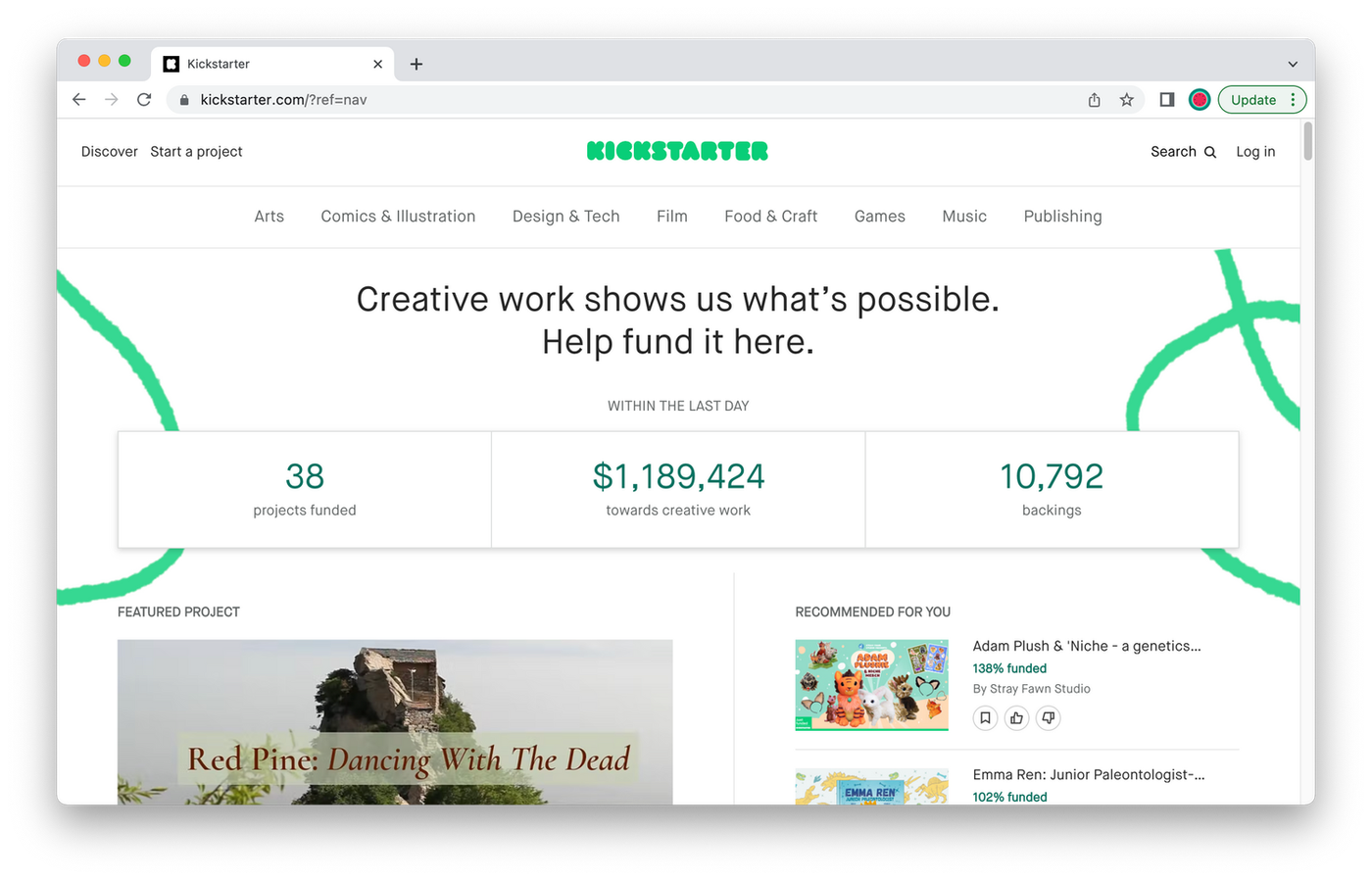
All Solutions

Explore all the solutions you can create with Paperform: surveys, quizzes, tests, payment forms, scheduling forms, and a whole lot more.
See all solutions











Connect with over 2,000 popular apps and software to improve productivity and automate workflows
See all integrationsSolutions
All Solutions

Explore all the solutions you can create with Paperform: surveys, quizzes, tests, payment forms, scheduling forms, and a whole lot more.
See all solutionsIntegrations

Connect with over 2,000 popular apps and software to improve productivity and automate workflows
See all integrationsResources
How to Start a Fundraiser in 6 Simple Steps

The best thing about fundraising is that anyone can do it. However, in order to make the most of it, you have to take the best route to create and promote your fundraising campaign.
This includes defining clear goals, using the best fundraising platforms, using the right strategies and promoting your campaign through the best channels.
We've created a simple 6-step plan to ensure that your next campaign will be a success. Let’s get right into it.
1. Define your fundraising goals
Before you kick off your campaigns, you'll need to define your goals. This will allow you to come up with fundraising ideas that align perfectly with that goal.
Some of the most important fundraising goals you should be thinking about are the following:
- Raise a specific amount of money
- Secure new donors and recruit supporters that will help you reach your goals
- Create and expand fundraiser awareness
Defining your goals like the ones listed above will help you stay on track with what your fundraising is really about, and where you want to take it.
Additionally, what your goals might be will depend on the nature of your fundraiser. Is it a personal fundraiser or a fundraiser for a local business? Your goals are affected by the industry you're in and/or the product you're aiming to launch.
It's helpful to focus on financial goals as well as goals in terms of the numbers of supporters that you want to reach. It’s absolutely necessary for you to know and understand the nature and specificity of your monetary goals before you start to raise funds.
Having a clear idea of your financial goals and target audience from the beginning will give a good definition of a rather big part of your fundraising activity and strategy.
In other words, knowing this and setting up your fundraiser goals accordingly will form the basis of your online fundraiser. Ultimately, it will help you gain confidence in your future steps in terms of your fundraising efforts.
When it comes to monetary goals, it’s extremely important that you try to set as realistic a goal as possible. You don’t want to start big and be unrealistic in terms of your financial goals.
2. Choose your online fundraising platform
When starting your fundraising activity, few steps are as important as choosing the platform that will host your fundraising campaign.
To help you make this decision, we've compiled a list of the most prominent fundraising online platforms.
Kickstarter
 (Image Source: Kickstarter)
(Image Source: Kickstarter)Kickstarter is a platform that supports creative projects where the creators of the projects are entirely responsible for creating the fundraiser, setting the project's monetary goals, and deadlines.
GoFundMe
 (Image Source: GoFundMe)
(Image Source: GoFundMe)Well-known crowdfunding platform GoFundMe is designed for individuals and personal fundraising pages. The platform doesn’t necessarily focus on creative projects.
Indiegogo
 (Image Source: Indiegogo)
(Image Source: Indiegogo)Indiegogo is quite a special platform that hosts a number of diverse fundraising campaigns. It’s an international crowdfunding site where imagination in terms of the projects’ topics is promoted.
Paperform
 (Image Source: Paperform)
(Image Source: Paperform)Another great choice for hosting a fundraiser online is Paperform. With the ability to fully customize forms, including for taking donations, Paperform can be a great choice for fundraising.
Paperform’s easy-to-use form builder is a great option for taking payments, getting donor information and more. Plus, you don't have to be limited by the restrictions of a third-party platform.
You can create your fundraising form in minutes with one of the available templates. Check some out below:
→ Donation Form
→ Charitable Donation Form
→ Donation Request Form
→ NPO/NGO Donation Form
3. Define your fundraising strategy
Next, you'll need to define your fundraising strategy.
In other words, you'll need to answer some basic questions in relation to your fundraiser that will help you set your fundraising strategy, in the same way, you defined your fundraising goals.
Here are some of the steps a fundraising strategy should involve:
- Appoint a fundraising coordinator.
- Set your parameters and outline your goals.
- Identify the methods that you’re going to use to raise money.
One of the first questions that you might find useful to answer is how are you going to raise money? That may seem like a simple one, but the answer is basically the basis of your entire fundraising strategy.
4. Promote your fundraising campaign
This step is about promoting your fundraising campaign and it’s a crucial part of your fundraising activity. You want your fundraiser to get noticed and be set for success.
For that reason, make sure that you’re using as many channels and online platforms to promote your fundraiser as possible.
For example, you might want to use social media ads and content to promote your fundraiser. Another idea might be to use email marketing services thus promoting your fundraiser through email and reaching out to people that would be interested in your idea.
You might also consider creating and distributing press releases to get the word out even more. In general, when it comes to promoting your fundraising campaign, it’s important that you get creative wherever possible.
Think about your ideal audience. What do they like? What websites do they frequent? As with any content that gets posted on social media and other online platforms, you should try to make it as compelling, well-made, and beautiful as possible. Look at the most funded projects on Kickstarter for inspiration.
5. Give back to your supporters and donors
Giving back to your supporters and donors is essential. While a certain amount of motivation comes from the act of giving, the most successful fundraising campaigns offer some kind of reward to people who contribute.
Pebble Time smartwatches are a great example. This project is the most funded in the history of Kickstarter, accumulating more than $20 million. Part of their success was formed because they provided backers with exclusive offers and promotions based on the amount they pledged.
These rewards ranged from extra accessories and free engraving to extra products on top of the initial purchase. This shows that you appreciate your customers and value their contribution, while also encouraging further donations. It's a win-win.
6. Deliver on your promises
This last step mostly applies to companies and non-profit organizations that go into crowdfunding in order to achieve some financial goals and bring to life their business projects.
At all times, you should remember that you’ve started your fundraising efforts for a specific reason; the fact that you’ve managed to raise funds gives you the opportunity to make your ideas come to life.
You owe this to yourself. To your team. To your backers; and the people that believed in your idea, and pledged their hard-earned money to it.
Additionally, this will give you the opportunity to create a strong community that believes in your products and/or services, therefore making it possible for the community to engage with you online.
Wrapping up
In this post, we’ve broken down how you can start an online fundraiser in six simple steps.
You shouldn’t forget the importance of choosing the best and most appropriate online fundraising platform that will help you cover your needs, achieve your goals, and reach your financial targets.
Additionally, the promotion of your fundraising campaign should be a step that you pay attention to.
Last but not least, give back to your supporters because that will make your fundraiser successful, and don’t forget to deliver on your promises and build what you’ve promised.
Be effective and creative with your campaign—you can make it happen. Good luck.
Speed up creating your how-to guides, training documentation, and interactive product demos with the...
Paperform has recently completed our System and Organization Controls (SOC) 2 Type I Audit Industry-...
Paperform's referral program has been extended to Papersign! Give your friends 10% off Papersign and...
Since launching our new eSignature tool Papersign, we’ve been working our butts off to build out fea...